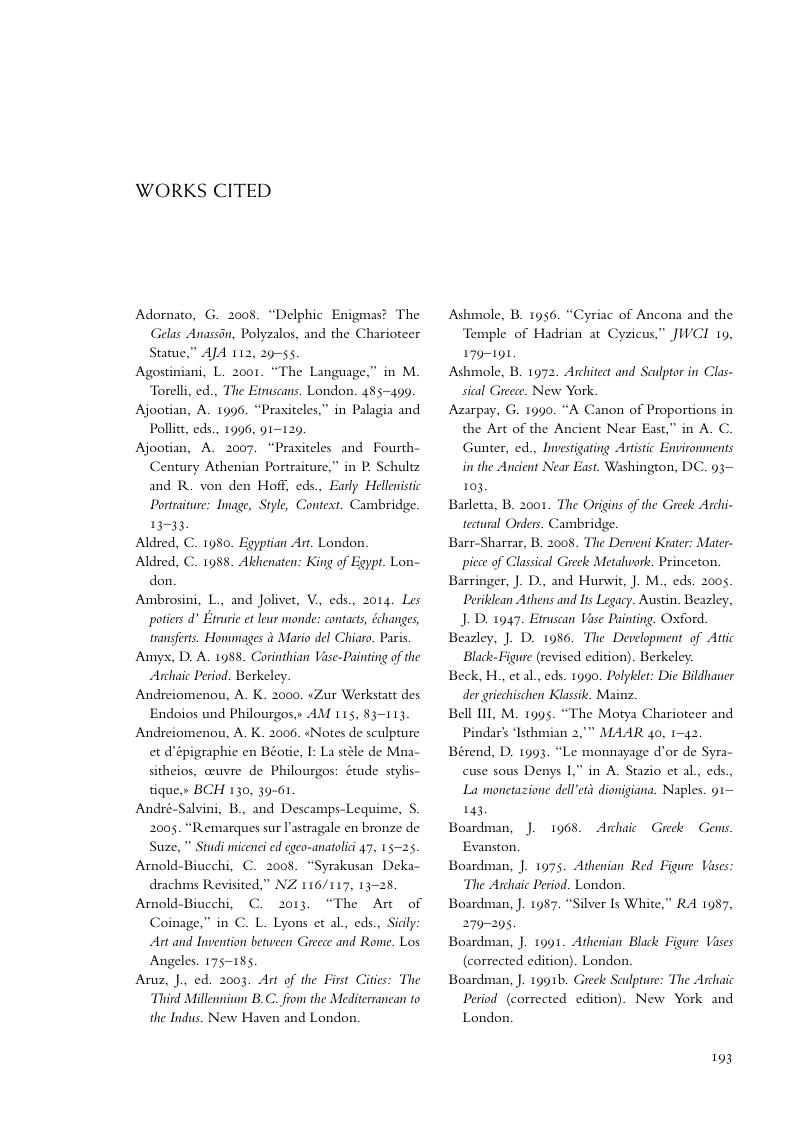Book contents
- Artists and Signatures in Ancient Greece
- Artists and Signatures in Ancient Greece
- Copyright page
- Dedication
- Contents
- List of Illustrations
- Preface
- Book part
- A Note on Abbreviations
- A Note on Translations and Transliterations
- Artists and Signatures in Ancient Greece
- Part One On The Status, Originality, and Difference of the Greek Artist
- Part Two Who Signed What, Where, How?
- Part Three Speculations
- Glossary
- Book part
- Notes
- Works Cited
- Index of Artists and Signatures
- General Index
- References
Works Cited
Published online by Cambridge University Press: 05 July 2015
- Artists and Signatures in Ancient Greece
- Artists and Signatures in Ancient Greece
- Copyright page
- Dedication
- Contents
- List of Illustrations
- Preface
- Book part
- A Note on Abbreviations
- A Note on Translations and Transliterations
- Artists and Signatures in Ancient Greece
- Part One On The Status, Originality, and Difference of the Greek Artist
- Part Two Who Signed What, Where, How?
- Part Three Speculations
- Glossary
- Book part
- Notes
- Works Cited
- Index of Artists and Signatures
- General Index
- References
Summary

- Type
- Chapter
- Information
- Artists and Signatures in Ancient Greece , pp. 193 - 202Publisher: Cambridge University PressPrint publication year: 2015



